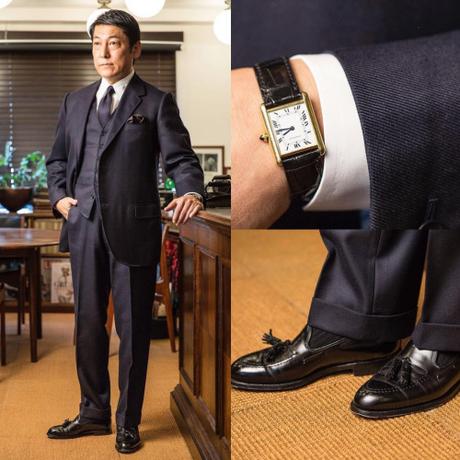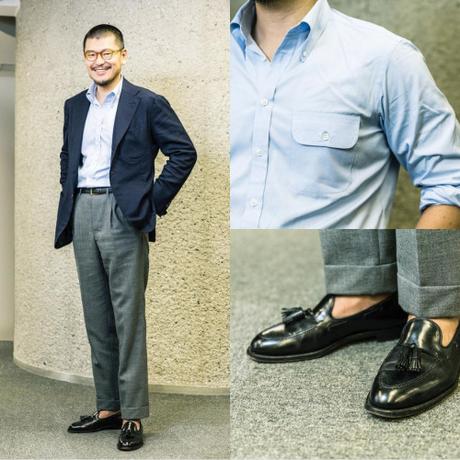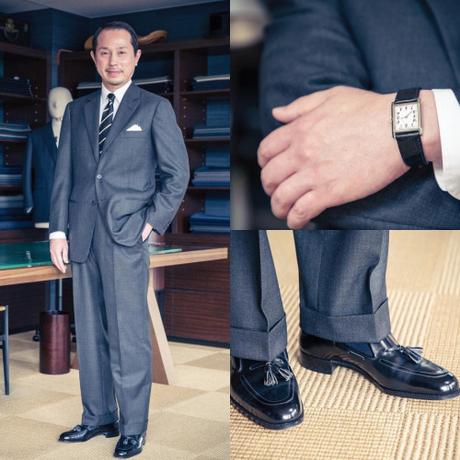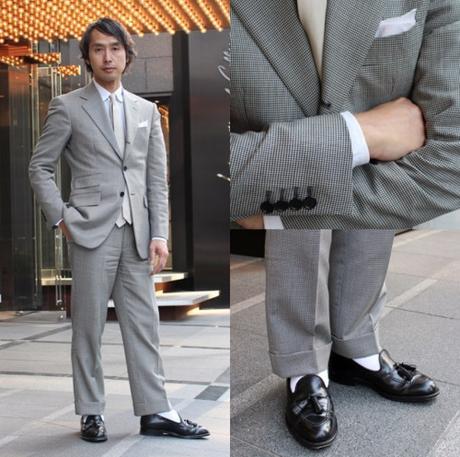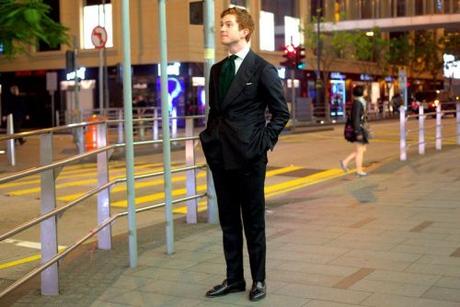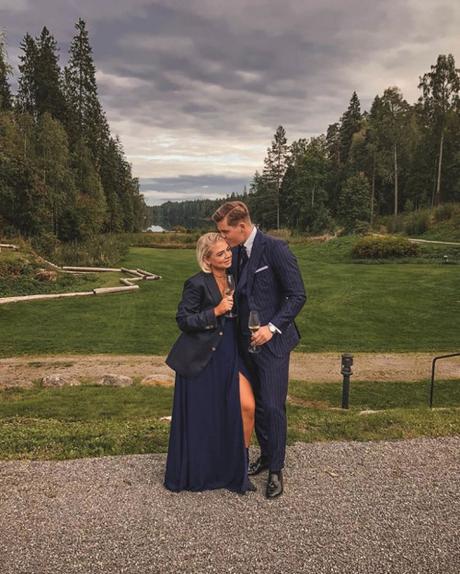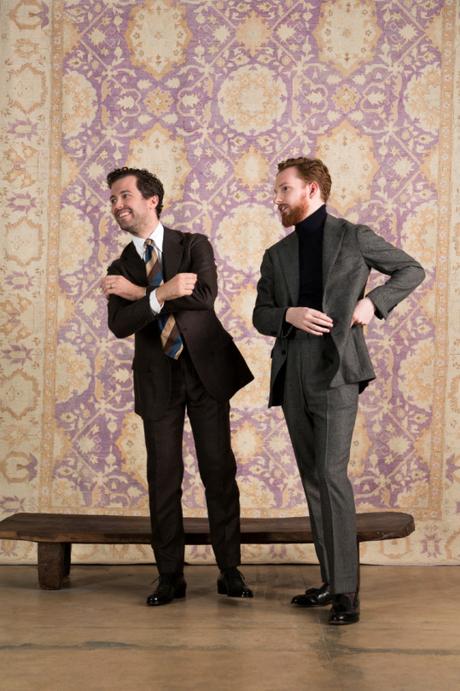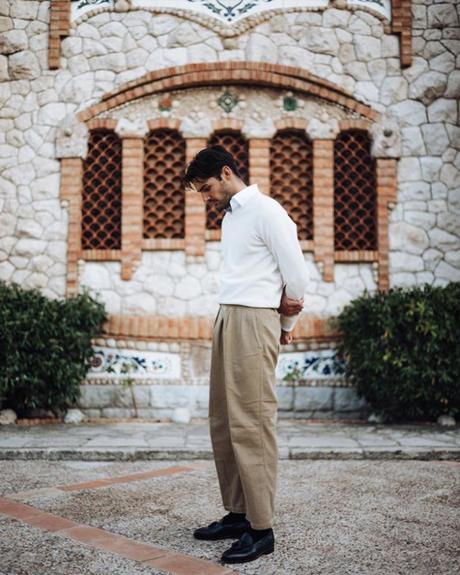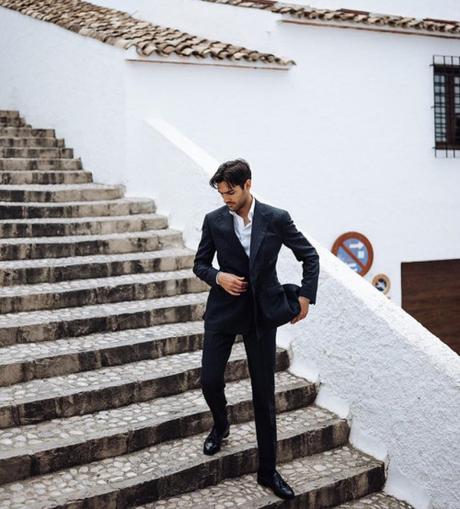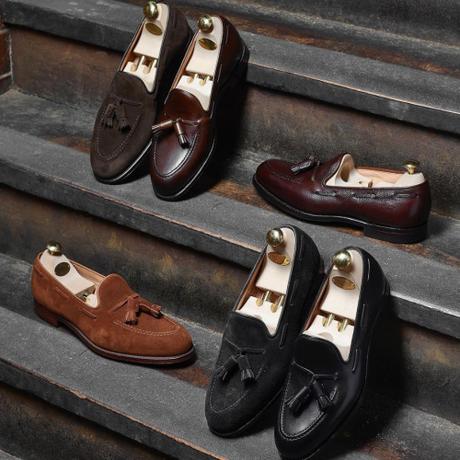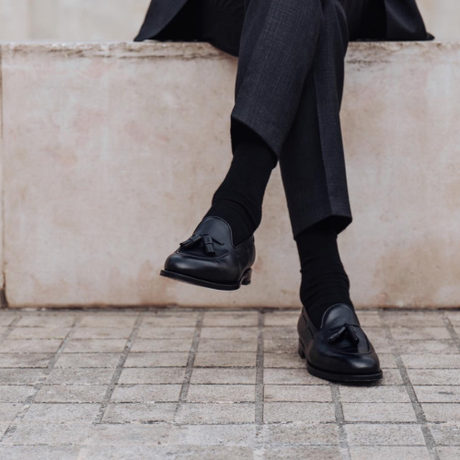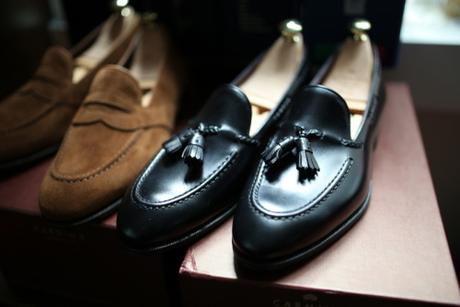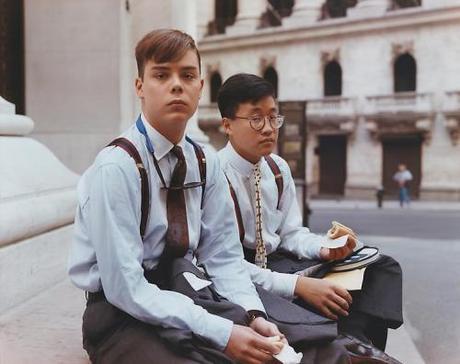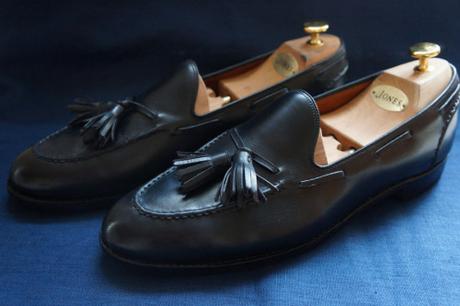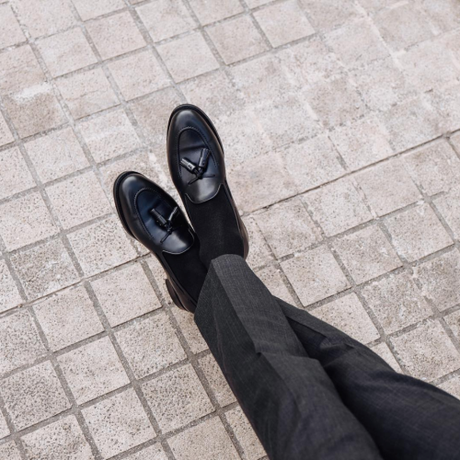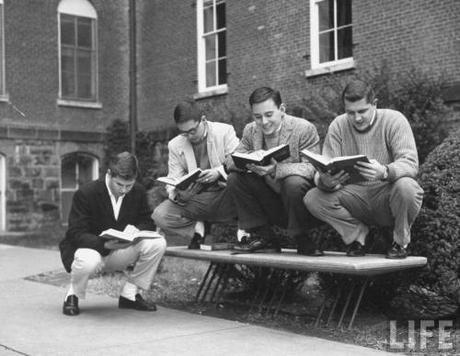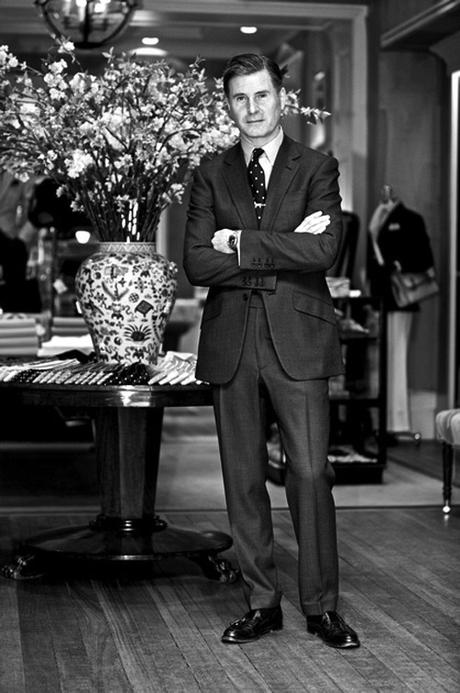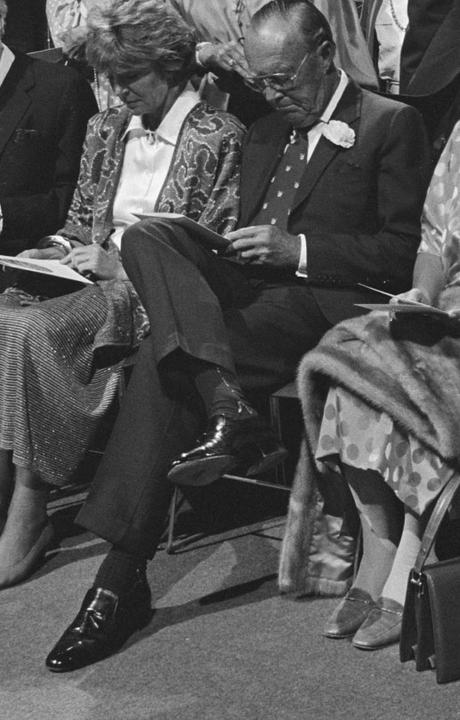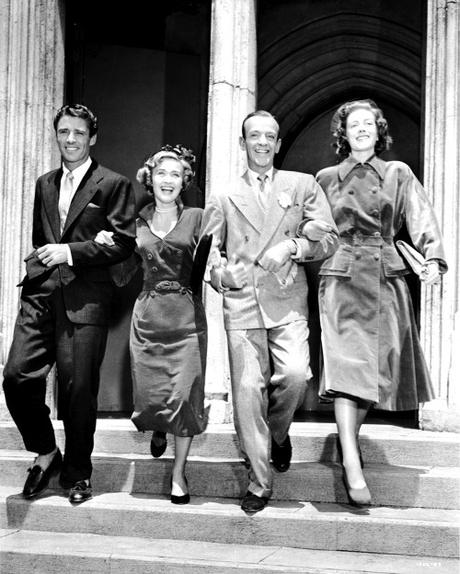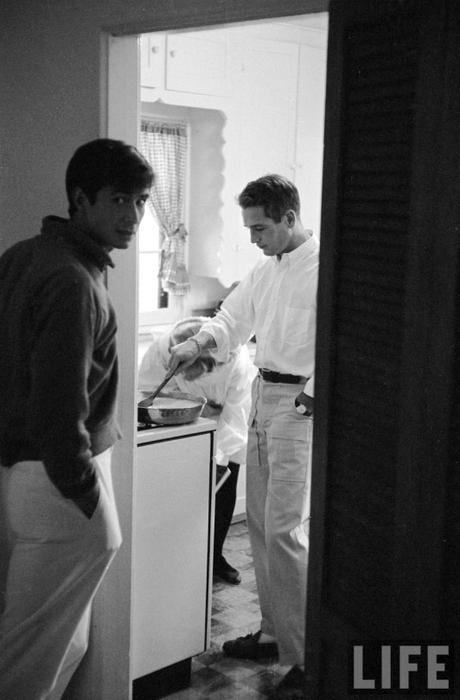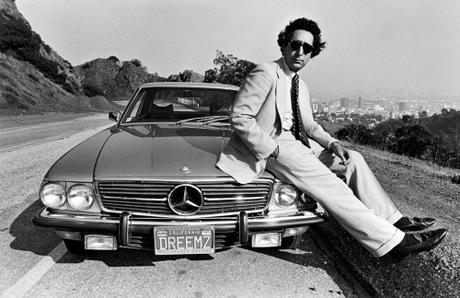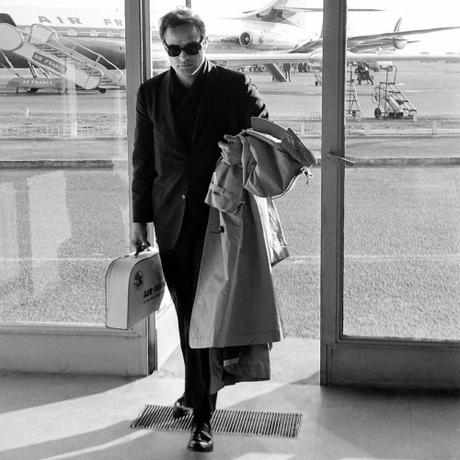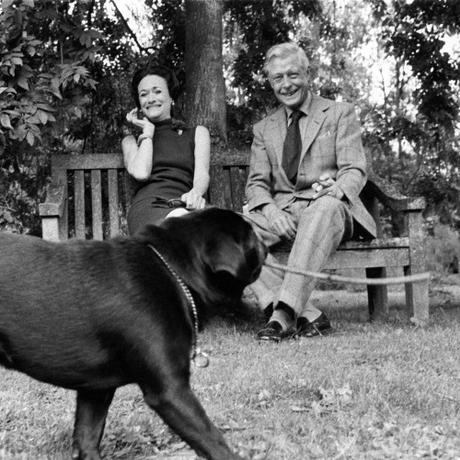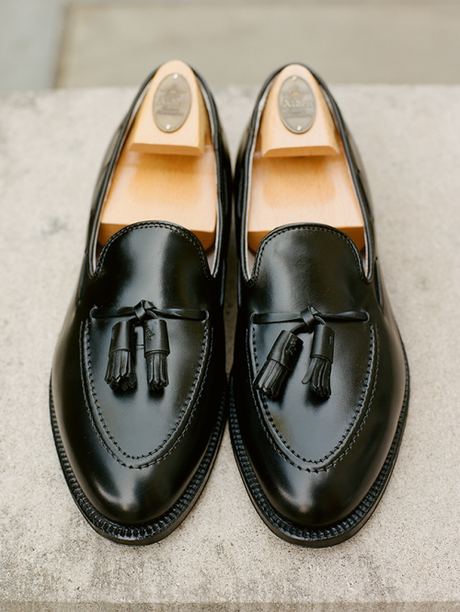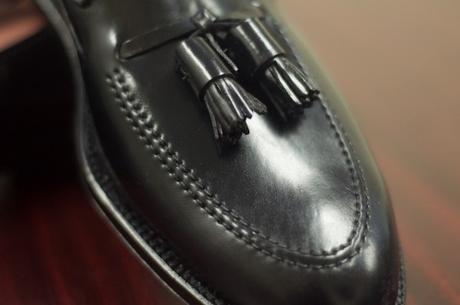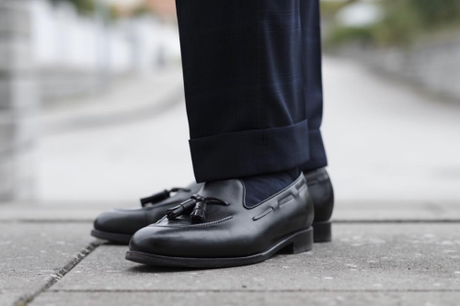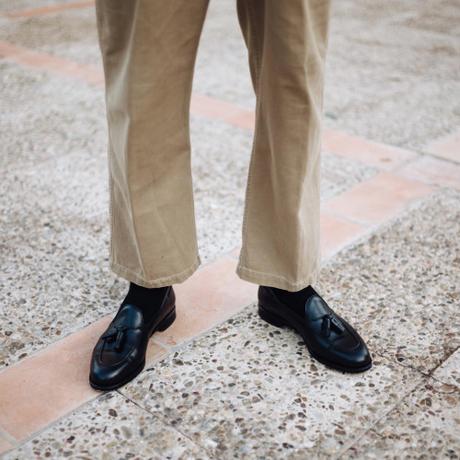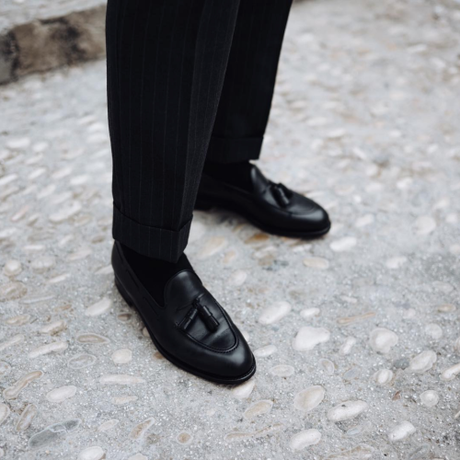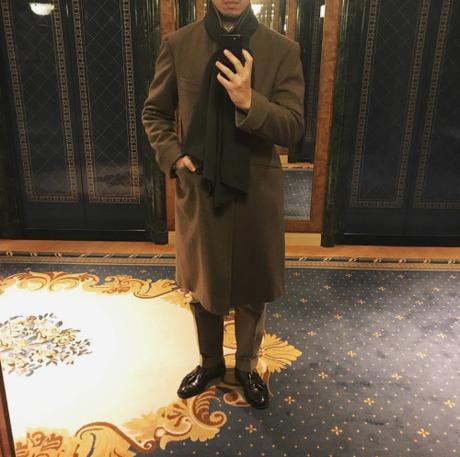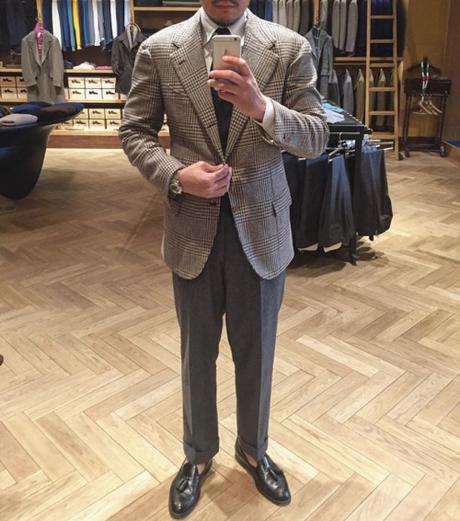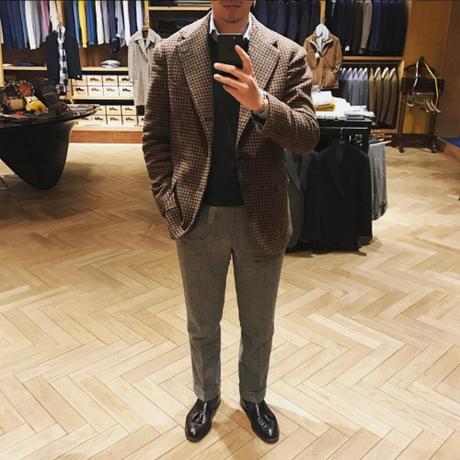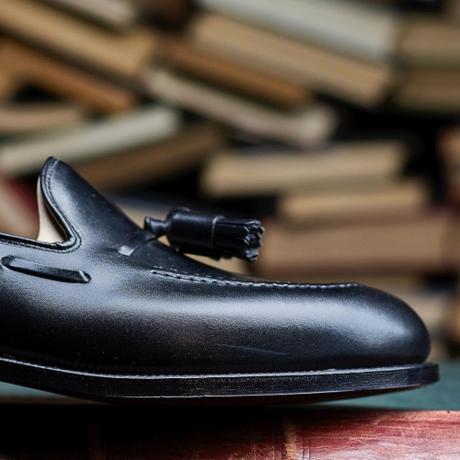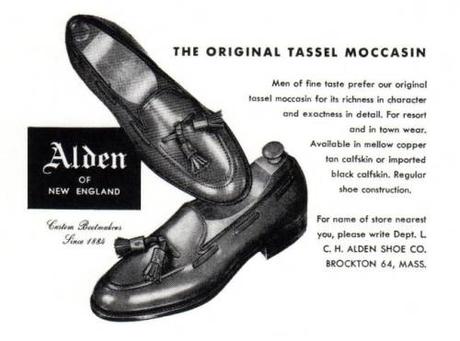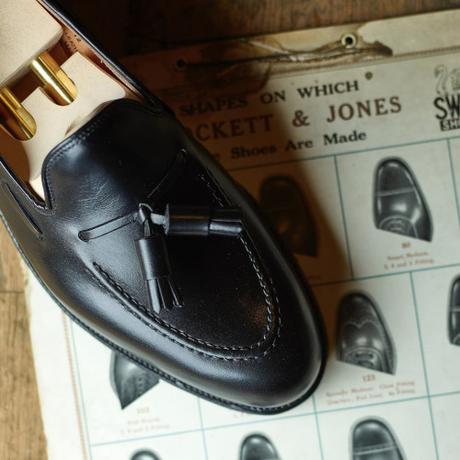
Hidden in the history of the tassel loafer is the story of why men’s dress has become increasingly casual with each passing generation. In the post-war period of the late-1940s, right when tweed jackets and Shetland sweaters dominated prep schools and Ivy League campuses, debonair actor Paul Lukas came back from Europe with a pair of oxfords. Their laces had little fringed tassels at the end, which Lukas thought made them look jauntier. So he took them to a couple of custom shoemakers to see if they could make something similar, and they in turn took the job to Alden. The company’s president at the time, Arthur Tarlow, came up with tassel loafers. That makes Alden’s model the original, and Paul Lukas the first man to wear this style.
Alden’s tassel loafers were an instant success, but they didn’t exist in a vacuum. If you flip through any men’s clothing catalog from this period, you’ll see how much the idea of comfort had already supplanted Edwardian norms of propriety. Instead of high-button dress boots and gaiters, American clothiers were selling low-cut shoes such as white buckskins, brown oxfords, and canvas tennis shoes with rubber soles. In his 1982 Town & Country essay on loafers, which was later collected in his 1985 book Elegance, Bruce Boyer wrote: “To see these newer low-cut shoes side-by-side in the [1915] Brooks catalog with the then more traditional higher-cut shoes is to realize immediately that back in 1915 the tide was unquestionably turning – had already turned in reality – and that men were allowing themselves more comfort in their dress. Heavy suits and boots, stiff collars, and high hats were all on the way out. Lightweight tweeds and flannels, button-down shirts and soft golf caps, Shetland sweaters and white bucks, had arrived.” The only thing missing from those 1915 catalogs were loafers, which were “the logical extension of comfortable and casual dress that marks the current century.”
Tassel loafers were the norm by the 1960s, worn to business offices and government buildings alike, and favored by college graduates who wanted something dressier than their school-day pennies. But the tide turned again in the 1990s, when the style became a synecdoche for the country-club set and dishonest lawyers. In an all-too-often-cited New York Times article, Neil Lewis once reported that the term “tasseled loafer” was not just a way to describe a simple slip-on anymore, it was a political epithet:
The shoes have been deployed in recent years as metaphorical weapons in the nation’s political wars. When George Bush wanted to hurl a wounding barb during the last Presidential campaign, he complained that Bill Clinton was supported by ‘every lawyer that ever wore a tasseled loafer.’ Mr. Bush may have had reason to believe the charge potent as he had himself once been the target of a tasseled-loafer insult. When he ran for President in 1980, he complained that Reagan had bested him in a debate in New Hampshire by using unfair tactics. One of Mr. Reagan’s aides retorted in a widely disseminated remark that those with Mr. Bush’s private-school pedigree were generic sore losers. ‘Those tasseled-loafer guys always cry foul when they lose,’ the aide said.
The history of tasseled shoes is basically about how each generation continually throws out whatever is considered the most formal, first replacing Edwardian boots with slip-ons, then slip-ons with sneakers. The driving force for this, I think, roots back to 17th century ideas that celebrated the common man. The death knell for any piece of clothing is its association with elitists and stuffed-shirt types.
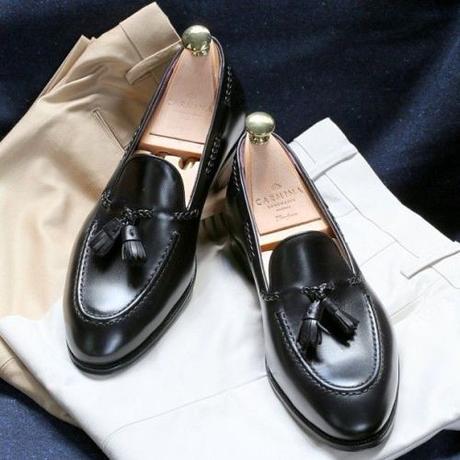
Tassel loafers today still carry some of that 1990s baggage, but that’s also what makes them charming – so long as you’re not wearing them with contrast collars and “greed is good” ensembles. They work well with a smile, rather than a sneer. I like them with navy sport coats and chinos in the spring; tweeds and flannels in the fall. With clothes that are a bit too fully cut, tassel loafers can look a little fuddy duddy. With clothes that are too tight, they be overly hip. Somewhere in the middle, I think, is where they’re best.
I have two pairs – one in brown suede, the other brown calfskin – but have been wanting to add a third pair in black. Black tassel loafers feel a bit more modern and sophisticated than the same ones in brown, towing the line between formality and casual. They can also feel a little unexpected, making them a style statement. In that 1980s essay, Bruce suggests they may be the perfect travel shoes:
While the classic cordovan penny loafers still seem a bit too casual for the boardroom, a pair of black box calfskin tassel slip-ons is no longer the anathema it once was. There is another advantage to dressier casuals. A businessman needs a compact wardrobe when traveling, and shoes are notoriously heavy to pack. A lightweight loafer can serve triple duty, worn with a suit, sports jacket, or even jeans if it comes to that. This type of loafer has been known to be pressed into service as beach shoe and bedroom slipper, and it seems to slip on and off easier during those tedious long-distance flights when anything to increase comfort becomes a tender mercy indeed.
It seems like black tassels are a favorite of many well-dressed men. Yuhei Yamamoto of Tailor CAID wears them with everything from three-piece suits to seersucker ensembles. Jim Parker of The Armoury uses them in place of black oxfords. And if you flip through a Japanese menswear magazine, you’ll see them worn with everything from worsted wool tailoring to “happy suits” to sport coats. My friend Richard Carroll, who illustrates for Put This On, has also been considering a pair. “I typically don’t wear anything too dressy, but also don’t wear anything very casual. If I’m wearing a suit, it’s usually a cotton, corduroy, or linen. But I mostly wear separates and like to layer. Black tassels feel like the only shoe I need that I don’t have,” he says.
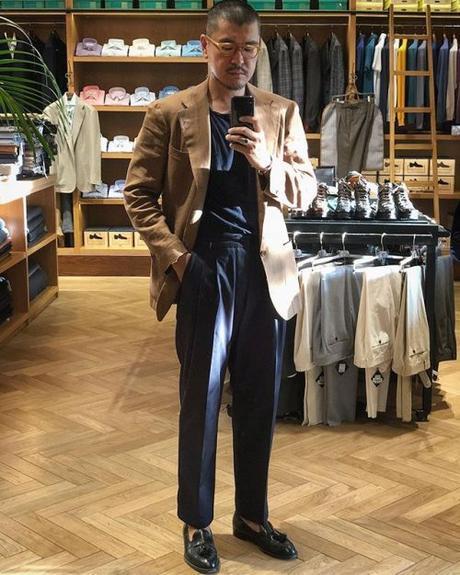
I’ve also noticed George Wang at BRIO wears black loafers every time I’ve met him for lunch. He keeps a few pairs at his home in California – one grained leather horsebits; the other unlined, shell cordovan pennies made by Alden for Brooks Brothers. The ones he wears most, however, are his Alden tassels. “They work really well with a navy suit, in an American Ivy and Italian-Ivy kind of way. If someone has a preference for washed out jeans, like a pair of vintage Levi’s, then black footwear works much better than brown.” I’ve seen George wear his black tassels with navy sport coats and gray tropical wool trousers, as well as brown tweeds and tan whipcords. I imagine they can be used any time you’d wear a black knit tie – which is to say, they’re more versatile than you’d think.
If you’re looking for a pair, consider Alden, if only for provenance. They invented the style, after all. They have a few models made for their in-house label, as well as some they do for stores such as Brooks Brothers and Unionmade. Those have foxing, which is the stitching you seen on the heel cup, whereas the Alden-label tassels are plain at the back.
Carmina is good if you want something shapelier. And Edward Green has two models, their Belgravia and Greenwich, while John Lobb has a more casual design called their Alton. Paolo Scafora has handwelted tassel loafers, which have trimly cut soles that hug the uppers, making them look a bit sleeker than Goodyear welted options. Both John Lobb and Paolo Scafora’s models are available in black leather through Skoaktiebolaget’s MTO program (a store that sponsors this site).
Some of my favorites include Allen Edmonds’ Acheson and Crockett & Jones’ Cavandish, which have lower hanging tassels (whereas Alden’s tassel straps feel uptight by comparison). “The Acheson’s cross strap comes down at an angle rather than straight across. Combined with the lower vamp, this makes the tassels rest farther down towards the toe,” Christian at Ivy Style writes. For something more affordable, Meermin and Morjas are good options around the $200 price point.
As for whether there’s an inherent contradiction in using a formal color for casual slip-ons, George Wang says: “I don’t believe in rules. Rules are made by stupid people to make smart people stupid. I prefer to think about style in terms of social conventions and how things work as part of a whole. There are so many instances where black in an outfit looks great and I don’t think you can reduce the color to just formality.” Amen.

